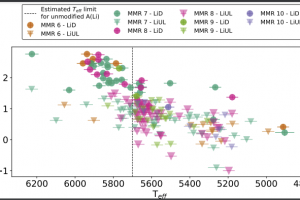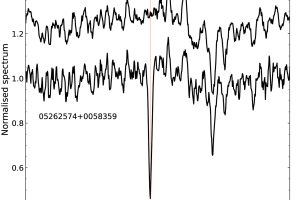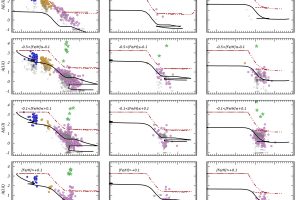Stellar lithium abundances may not be representative of the interstellar medium composition. The study: “The Gaia-ESO Survey: Probing the lithium abundances in old metal-rich dwarf stars in the solar vicinity” of M. L. L. Dantas (Nicolaus Copernicus Astronomical Center) appeared on A&A

The study of chemical abundances in the interstellar medium and stars in our Galaxy is of utmost importance, as it provides insights into the chemical enrichment of the galactic interstellar medium by massive stars and the evolution of different components of the Milky Way. Lithium is frequently the subject of spectroscopic surveys and studies aimed at determining its abundance in
» Read more

